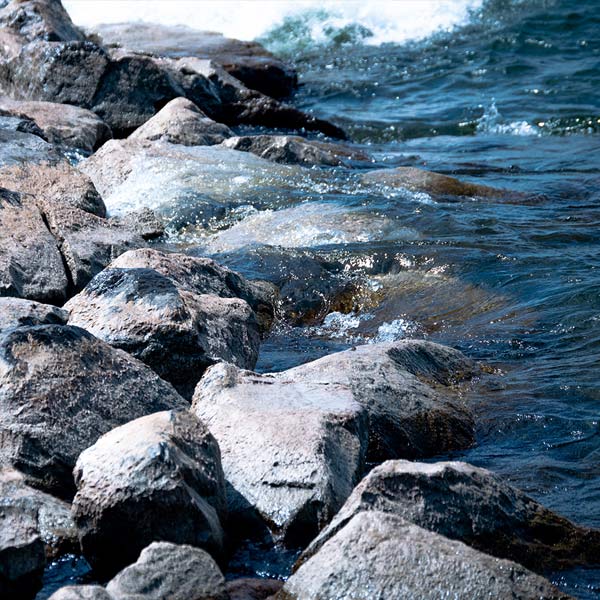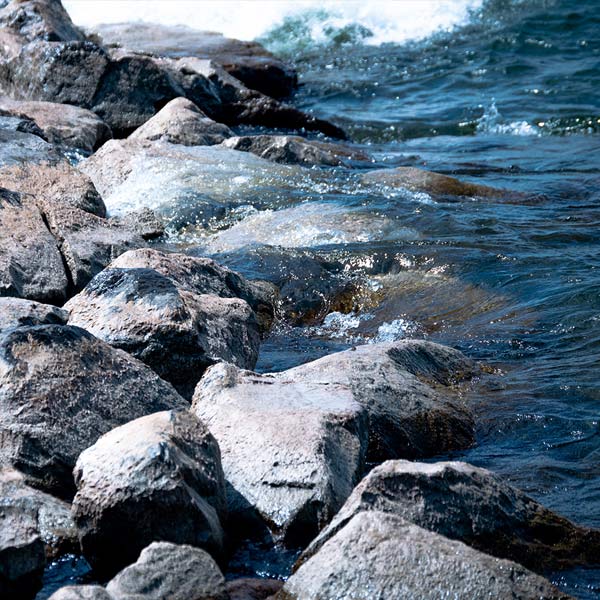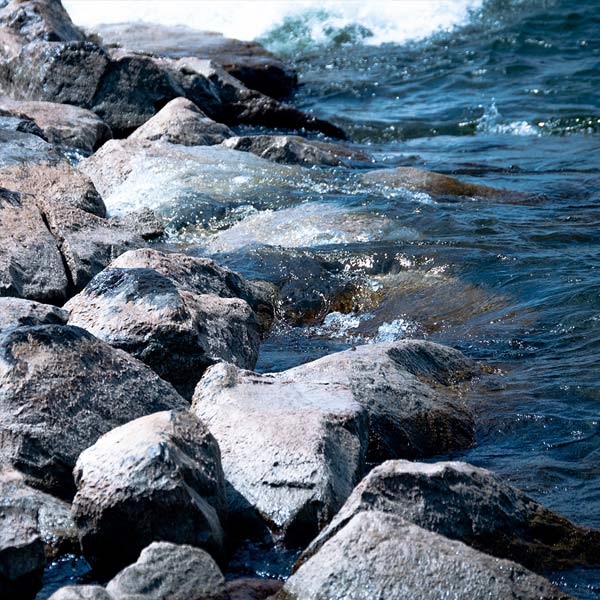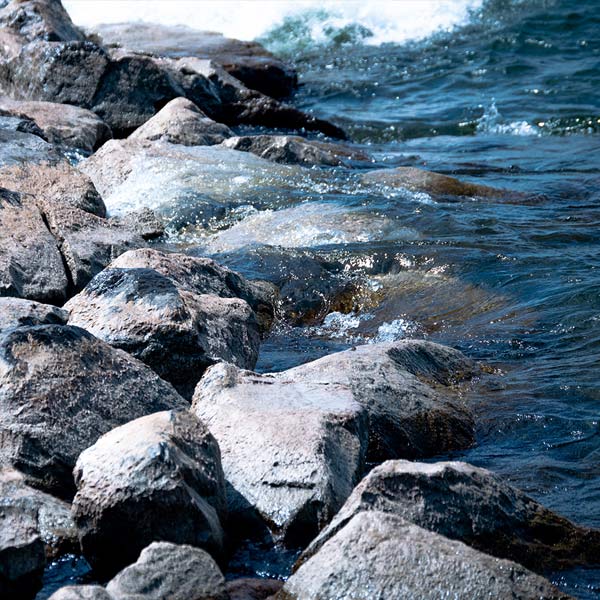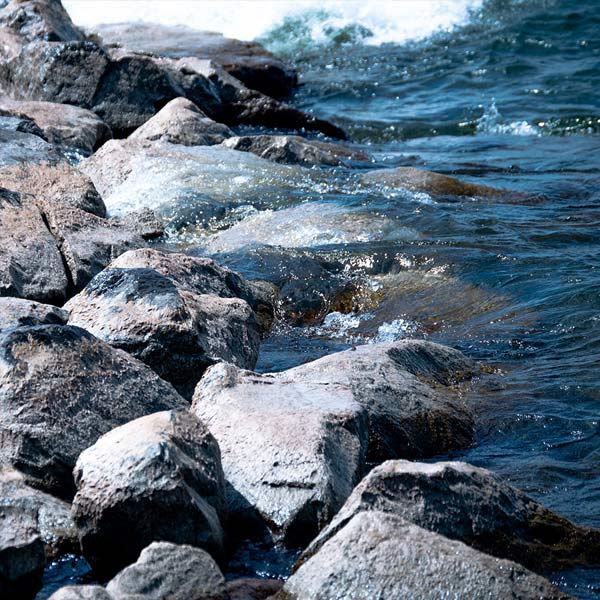INTRODUCTION BY PAUL HOCHMAN
I first met Louise in 2006 while working at BarnesAndNoble.com. We had a fabulous lunch at a Greek restaurant in New York City to celebrate the publication of STILL LIFE. She signed my copy of the book as follows:
“For Paul, such fun undermining St. Martin’s together”
Little did we both know that just four years later I’d join St. Martin’s Press/Minotaur Books and, together with Louise and the wonderful “Team Penny”, we’d undermine the publishing status quo and rocket Louise’s books to the top of the Bestseller Lists!
Gamache Series.com, the website you are now reading, and the Re-Reads initiative was originally conceived to promote THE LONG WAY HOME so to say I have a certain connection to this book (and all of Louise’s novels really!) is to say the least! This website – a community really – with an enormous amount of content and connections was built on the back of THE LONG WAY HOME.
The really unique thing about THE LONG WAY HOME Re-Read is that it was led by readers just like you, in real time, at the point of publication. Now – I doubt it – but if you haven’t read the book yet, beware, spoilers lie ahead!
RECAP
The Re-Reads initiative was initially launched in the lead-up to the publication of The Long Way Home. After the book was published, readers came together once a week on GamacheSeries.com to discuss the book, ten chapters at a time. What you’ll read below includes many of the insights from those readers.
Ch. 1-10: From the opening chapters, readers point out that this book is very different from previous books in the series. After all, How the Light Gets In ends with what feels like a natural conclusion: the internal struggles within the Sûreté du Québec are resolved, Jean-Guy gets the help he needs and marries Annie Gamache, and Armand and Reine-Marie retire to Three Pines.
The Long Way Home opens on the bench in the Three Pines village green. Armand has been sitting at the bench every morning, holding a book – The Balm of Gilead – but not reading it. Clara has taken to joining him. As they sit, Clara wonders why Armand never seems to read his book. Armand wonders if Clara has been sitting with him because she pities him – or because she needs something.
After some time, Clara tells Armand what she’s been struggling with: the year before, she and her husband Peter, also a painter, had separated. Before he left, they made an agreement that they would have no contact during their year apart, but on the first anniversary of his leaving, he’d return to discuss their relationship. But it’s been a few weeks since that day, and Peter still hasn’t come back. Clara is worried.
The neighbors gather for dinner, and Armand tells Jean Guy – who still can’t bring himself to call his new father-in-law anything other than patron – about Clara’s concerns. When Clara finds out, she’s furious at Armand: a fury that readers found frustrating and disrespectful. But Gamache, thinking Clara might not want his help after all, is relieved.
But she does need his help. When Gamache asks Clara why Peter left, she tells him that he was always supportive of Clara when she was struggling, but wasn’t supportive of her after her success. As Clara’s career took off, Peter’s plateaued.
First, Gamache pays a visit to Peter’s mother, Irene – a cold woman – and her husband, Bert Finney – a kind man. The couple has art all over their walls, paintings from the finest Canadian painters, but none by either Peter nor Clara. Neither have heard from Peter recently.
Doing their due diligence, Gamache and Jean-Guy check Peter’s credit card records, and find that he’s traveled all over the world – Venice, Paris – in the year he’s been gone. One place in particular stands out as unusual: Dumfries, Scotland. But the records also show that he returned to Quebec City recently, just four months ago.
Clara and Myrna travel to Toronto to speak face-to-face with Peter’s siblings: his brother Thomas, and his sister Marianna. Neither have heard from him either.
And Clara meets with Peter’s siblings to see if they know anything about Peter’s whereabouts. At his sister Marianna’s, we encounter Bean: Marianna’s child. Born out of wedlock, Bean’s gender identity is a mystery that Marianna refuses to share with her family, out of spite – though the readers in the comments speculate that Bean is a girl.
Ch. 11-20:
Clara and Myrna visit the Ontario College of Canadian Arts, where Clara and Peter went to school. They meet with the charismatic Professor Massey, who tells them Peter was recently there, but that he doesn’t know where he went after he visited.
Here, we learn more about Clara’s time at OCCA: she spent most of her student years as a bit of a reject – her art was shown in Professor Norman’s Salon des Refusés – until Peter, who was more conventionally talented and popular, noticed her.
Gamache and Jean-Guy go visit Dr. Vincent Gilbert in the forest to ask him about Paris. Later, in the Garden with Reine-Marie, Clara, Jean-Guy, and Myrna, Armand says he thinks Gilbert and Peter were drawn to the same place in Paris: LaPorte. The Door. A community created by a priest to serve children and adults with Down’s syndrome. Vincent Gilbert volunteered there, hoping to find himself, and the theory is that Peter did too.
In these chapters, commenters point out, a new side of Peter begins to emerge. Clara realizes that the paintings on Bean’s wall weren’t Bean’s, but Peter’s first attempts at painting something with feeling. “Peter Morrow took no risks,” Louise writes. “He neither failed nor succeeded. There were no valleys, but neither were there mountains. Peter’s landscape was flat. An endless, predictable desert.” Perhaps all of Peter’s wanderings were his attempts to find himself.
Marianne sends the paintings to Clara. Commenters point out that Clara feels a twinge of jealousy, looking at them. Where Peter used to only paint with muted colors, the new paintings were bright and colorful. Suppose they weren’t abstract, Gamache wonders? Suppose Peter was painting what he saw?
The Dumfries, Scotland question is still outstanding. Gamache calls the Police Constable in Dumfries to ask if there are any artist colonies there. Constable Stuart couldn’t think of any artist colonies, but did say they had gardens. Gamache sends him a picture of Peter’s painting, and Stuart recognizes it: he had painted The Garden of Cosmic Speculation.
Later, Constable Stuart asks around town about the garden. An old man, Alphonse, tells him about a time he went to shoot hares there. He sees a large hare, who stares at him, unmoving. And then behind that one, he notices 20 others. And then notices one turn to stone in front of his eyes. Back in Canada, Armand notices a circle of stones in the photos – a stone circle not visible on the garden’s official website. One commenter pointed out that the garden reminded her of Peter, straight lines and geometric shapes, but with a little magic thrown in.
Ch. 21-30:
Peter’s paintings continue to reveal new meanings. Clara and Armand look at one of the paintings in a new perspective, and see an image that they recognize: The St. Lawrence River.
They travel to Baie-Saint-Paul, a tourist destination near Charlevoix, where a meteor had hit millions of years before, creating a natural ecosystem unlike anywhere else in the world. Readers point out that just like the Garden of Cosmic Speculation, this is another “cosmic” location. Is there a reason Peter was drawn to both?
There, they split up to visit galleries, but no one had seen Peter. In their search, they meet a man named Marcel Chartrand, who runs the Galerie Gagnon, showcasing the works of Clarence Gagnon (you may recognize one of Gagnon’s paintings from the cover of The Long Way Home!) He introduces himself and offers them a place to stay, since all of the hotels were full. He knows Peter: Peter had spent many hours in the gallery back in April, and had ended up renting a cabin down the road. But he left before the summer, and Marcel does not know where he went.
However, Chartrand gives Gamache another clue towards Peter’s whereabouts: Peter had asked after No Man, someone who ran an artist’s colony in the woods. Was it No Man – or Norman? Could it be the same cruel Professor Norman who set up the Salon des Refusés at OCCA?
To find out more, Reine-Marie and Ruth go visit Professor Massey – who seems quite taken with Ruth – to ask him about Professor Norman. Massey says that Norman believed in the tenth muse: that there was a muse for art. Massey says Norman was eventually fired for being insane, and for creating the Salon des Refusés, a gallery for failures.
Massey doesn’t have any photos of Norman – in the yearbook, instead of portraits of the professors, students chose to feature a piece of each teacher’s art. The self-portrait by Professor Norman was wild, a portrait of insanity, and the signature on the art did not say Norman, but No Man. Had the pursuit of the tenth muse turned Norman mad?
Back in Baie-Saint-Paul, the group is unsure whether they can trust Chartrand. How connected to No Man’s artist colony was he really? Was he a former member, returned to Baie-Saint-Paul after the colony folded? Or how about the owner of La Muse, a brasserie in town – was he a former member? Jean-Guy asks around and finds out the man’s name is Luc Vachon, and that he did, in fact, live at No Man’s colony for a few years.
In these chapters, commenters point out that it’s not just Peter’s personal journey we are watching in this novel. We’re also seeing huge changes in Jean-Guy, too – in his calmness in sobriety, and in his acceptance of the villagers he used to disdain.
Although Clara is officially in charge of this investigation, Gamache goes to the police station, where the agents recognize him from the previous year. There, he meets Agent Morriseau, who tells him that No Man’s colony was a cult. Quietly, Gamache asks the agents to arrange for sniffer dogs, to check the area for any bodies.
And then Chartrand asks them if they’d like to stay at his home that night – not his apartment above the gallery, but his remote home in the woods. Clara says yes.
Ch. 31-end:
At Chartrand’s home, the villagers continue to inquire about No Man. Was he simply the leader of a commune – or was it a cult? Chartrand says he lectured there. Was he invited in, as an outsider – or was he already there, as a member?
Jean-Guy finds out where the owner of La Muse goes to paint: a remote village called Tabaquen, which means “sorcerer.” The only way in and out of Tabaquen is by boat or plane, so the villagers purchase tickets to fly, and at the last minute, Chartrand buys a ticket to join them.
The plane ride is harrowing, and the pilot points out that artists typically arrive by boat – but that neither option is a smooth ride. They show the pilot a photo from the art school yearbook, of Peter and Professor Massey, and ask him if he’s seen Peter. He says yes.
Clara then asks the pilot to land in Sept-Îles. She wants to retrace Peter’s steps as he would have done it, by boat. Jean-Guy wants to get to Tabaquen as quickly as possible, and is sick of following Clara’s lead. Gamache reminds him that they’re here to support Clara, nothing more.
On the ship, the Loup de Mer, there are two cabins. Thinking it would be the bigger cabin, the men take the Admiral’s Suite, which is barely big enough to fit the three of them. Gamache asks the porter about Peter, and the porter says he recognizes him. That he watched him closely on his journey, to be sure he didn’t jump from the deck. Meanwhile, the Captain’s Suite, where the women are staying, is luxurious.
Gamache recalls something from the flight: when the young pilot said he recognized the man in the photo he showed him, it wasn’t Peter he recognized. It was Massey who he’d flown to Tabaquen the day before.
The sniffer dogs found something suspicious, a substance buried in a container: it was asbestos, found along with the canvases. Whoever would have handled the canvases would likely die, eventually, from inhaling asbestos. The principal of the college confirms that asbestos was detected in Professor Massey’s office. Had Norman sent his asbestos-infected paintings to Massey in an attempt to slowly kill him?
After traveling through tumultuous waters, the river eventually flattens to glass and they arrive in Tabaquen. Clara stays in town – unsure of what they’d find – and Gamache and Jean-Guy head to No Man’s cabin. There, they find Peter sitting on the porch, looking unkempt. And inside the cabin, they find a body: Professor Norman. Peter says that Norman had sent him away, and when he returned he had found him dead. Luc, from the brasserie, had been there too – but Peter had sent him to call for help.
Here, Gamache realizes that he had everything backwards: it wasn’t Norman adding asbestos to his painting to harm Massey, but the other way around. Massey had been sending him asbestos-infected canvases for years, because Norman was a threat.
And here, Peter asks Gamache if Clara had seen his new paintings, and what she thought about them. He has changed: her opinion is all he cares about now. Peter tells Gamache that he wanted to return home to her, but before he could face her, he wanted to confront Professor Norman for what he’d done to her back in school. But when he arrived, the old professor was sick, and Peter stayed on to care for him.
“The tenth muse is not, I think about becoming a better artist, but becoming a better person,” Gamache tells Peter.
But meanwhile, there’s the issue of the dead professor. Thinking the killer would be Luc, the group heads back to town. But in town, they find Massey, holding a knife to Clara’s throat. “I love you, Clara,” Peter says, as he takes the knife for her.
Commenters seem to agree that by the end, Peter had become a brave man in a brave country – a man finally worthy of Clara’s love.
FAVORITE QUOTE
“Fear lives in the head. And courage lives in the heart. The job is to get from one to the other.”
CONCLUSION
What an amazing journey revisiting my friends from Three Pines in the pages of THE LONG WAY HOME. I can’t believe it’s been eight years since the book was published (and this website was launched!) and almost twelve years since I started working with Louise!
The activist and journalist, Ella Winter, once said, “Don’t you know you can’t go home again?” Thomas Wolfe would then use the quote to entitle his posthumously released novel YOU CAN’T GO HOME AGAIN.
I, however, in the spirit of Ruth Zardo call bullshit!
Of course you can go home again. Even if it’s a long way home. We, as readers and lovers of the World of Louise Penny, are fortunate enough to go home to Three Pines every year!
DISCUSSION QUESTIONS
- Clara first approaches Gamache with great ambivalence: wanting (though fearing) to
know what happened to Peter, while reluctant to disturb Gamache’s newfound peace.
How did you feel about the decisions they both make at this point?
- “I thought he’d come home,” Clara says of Peter. Did you? How did your view of him
change in the course of the book?
- What does it mean to you to be a “brave man in a brave country”? How does courage—or
cowardice—feature in this novel?
- On the first page of the book, we hear about Armand Gamache’s repeated gesture, “so
tiny, so insignificant.” What is the true significance of this and other seemingly
inconsequential actions in this story?
- What do you think of Ruth’s role in this story? For example, consider the scene in
Massey’s studio, where she “seemed to have lost her mind. But found, Reine Marie
thought, her heart.”
- Both Peter and Gamache’s father, in a sense, disappear. What is the impact of this kind of
loss on Clara and Gamache? Have you ever experienced anything similar in your own
life?
- There is so much about art and the creative process in this book. How do we see that
unfold in the lives not only of Clara and Peter, but also of Norman and Massey? For example, what do you make of the Salon des Refusés? What do you think it meant to the
artists themselves?
- What roles do creativity and acclaim (or obscurity) play in the lives of both Clara and
Peter? In their marriage? Do you believe that Clara and Peter’s marriage could have been
saved?
- Louise has sometimes talked about the importance of chiaroscuro — the play of light and
shadow — in her work. What are the darkest and the lightest points in this novel? What
are some humorous moments, and how did you respond to them?
- Peter’s paintings look completely different from different perspectives. How does that
apply to other characters or events in the story?
- In Chapter Six, Myrna observes about jealousy: “It’s like drinking acid, and expecting the other person to die.” How does jealousy play out in the lives of various characters here?
What effects have you seen it have in real life?
- How does Clara’s quote from one of her favorite movies, “Sometimes the magic works,”
play out in the story?
- While a number of Louise’s books end in unexpected ways, the conclusion of this one is
particularly shocking. How did you feel as you were reading it, and what do you think
when you look back at it now?
- In some ways Clara’s quest to find Peter recalls such classic journeys as The Odyssey and
The Heart of Darkness. What are the most significant discoveries the central figures in this novel make along the way?
